A Walking Tour of Harlem With Schomburg Center Chief of Staff, and Columbia Grad, Kevin Matthews
This Black History Month, delve into the rich history of Harlem with this self-guided walking tour from Columbia’s campus to the Schomburg Center.
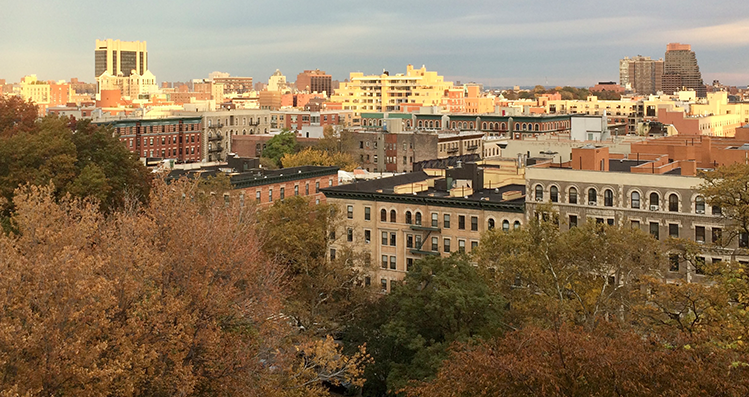
Though I live and work in Harlem now, I “discovered” Harlem as a Columbia College undergraduate.
I love urban landscapes—the creation of beauty among stone and tile, the mix of architectures, tenements, and brownstones melding with high rises, statues, and colorful murals alongside brick facades, nature peeking through over rooftops and pockets of parks and gardens, manicured or not. Harlem offers all of the above with the allure of community, Black culture, and history.
Below, are my favorite stops on a walk through Harlem, each celebrating a moment in Black history and finding connection with another Columbian, the famed Harlem Renaissance poet Langston Hughes.
Carl Shurz Memorial Outlook
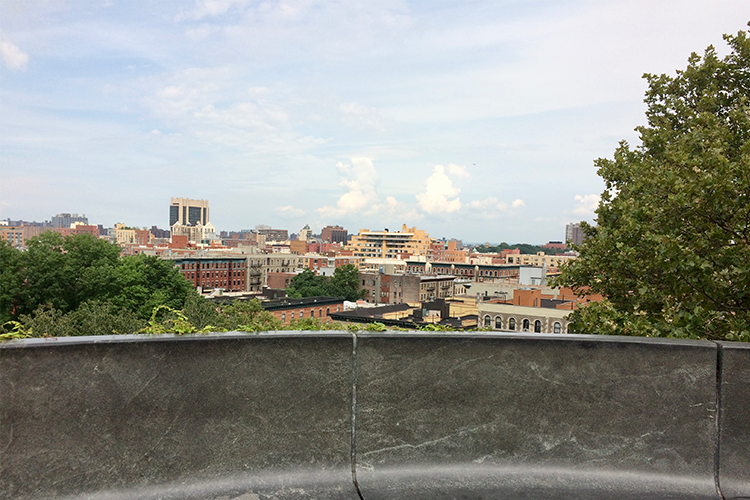
I first explored Harlem at the edge of the Columbia University campus, at the Carl Shurz Memorial at 116th Street and Morningside Drive. Admittedly, I never paid much attention to the statue of Shurz or even who he was. It is the view from the granite bench overlooking Morningside Park that I loved. Whenever I needed an uplift (which was often as a Black undergraduate in the ‘70s), I would go to “the stone bench,” as I called it, at the break of dawn to see the sunburst over the rooftops of Harlem. Sometimes I’d take a journal to write or draw, or a book of poetry. Collections by Langston Hughes were favorites then.
One can enter Harlem from around that park on several streets, or by “cutting through” the park, which is referenced in a line from Hughes’ poem, Theme For English B, in which he describes attending a college on the hill above Harlem, and, here I paraphrase, cutting through the park to go back to his room at the Harlem Y.
Morningside Drive to Frederick Douglass Memorial
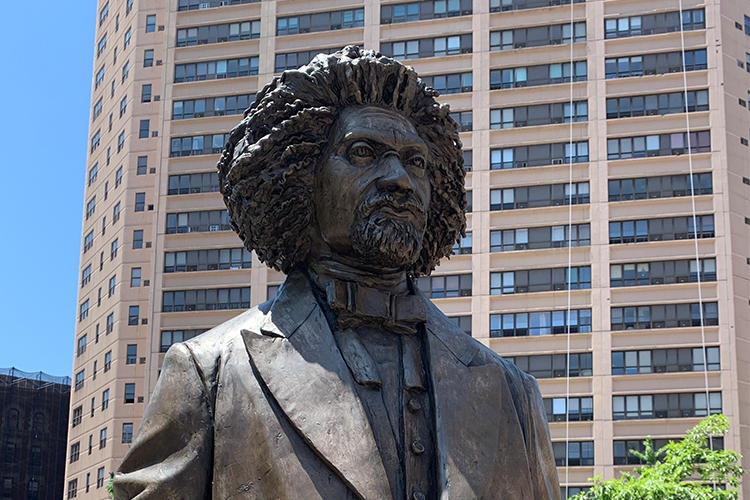
For another interesting stroll, walk down Morningside Drive, along the western edge of the park. This is the green space (know your history) that was selected to become a university gymnasium, until the community and student uprisings of 1968. Past the park and east to Frederick Douglass Boulevard (8th Avenue) is the bronze statue of Douglass, facing north. Download and listen to the soundtrack from the movie Across 110th Street (by singer-songwriter Bobby Womack). Though the message and symbolism are different today, one can still feel the shift of the neighborhood and culture once north of 110th Street.
Harlem Meer & Central Park
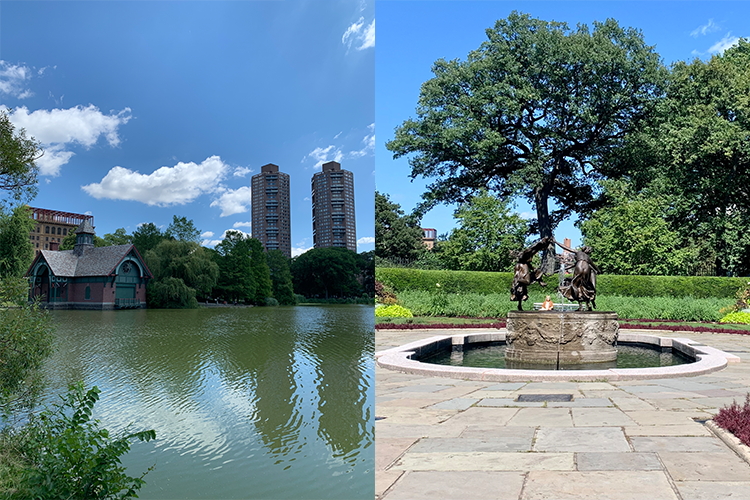
Along 110th Street, Harlem is bordered by the northernmost edge of Central Park. A favorite spot is Harlem Meer, which is replete with amphibious life and interesting fowl. And on the Fifth Avenue edge, there is a secluded manicured garden, home of the Untermyer Fountain with the statue of Three Dancing Maidens.
Harriet Tubman Memorial
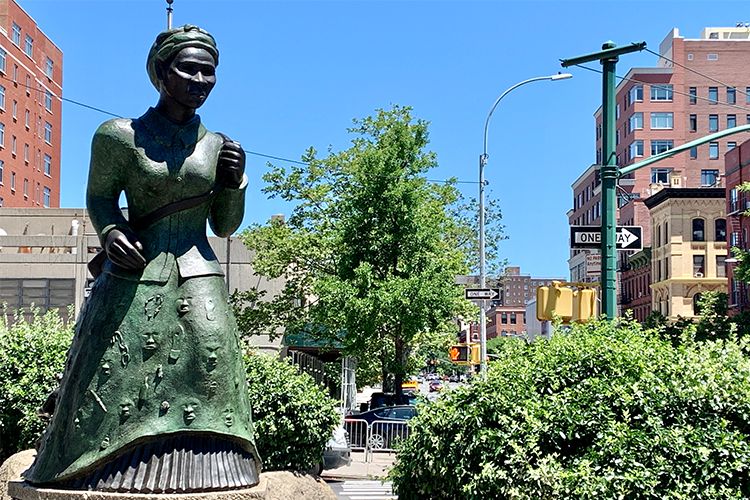
Walk along 8th Avenue to 122nd Street and you will see the looming statue of Harriet Tubman, facing south as though looking at Frederick Douglass. You can almost feel the call and response between the two statues.
Spirit of Harlem
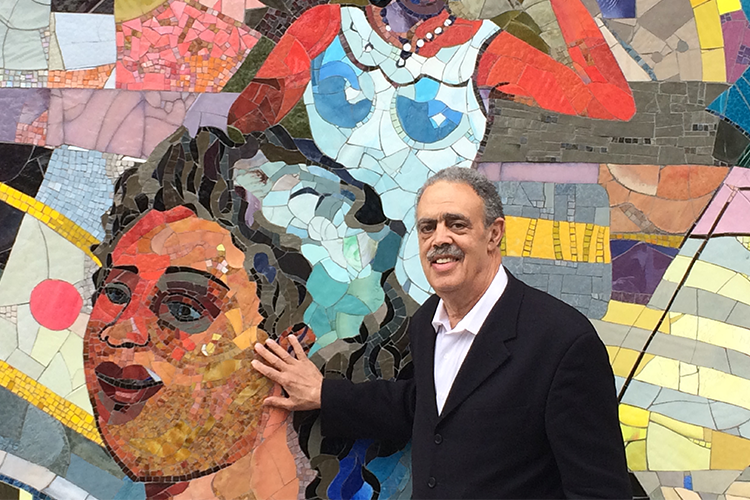
Just a few streets north at the corner of 125th Street and Frederick Douglass Boulevard is the mosaic “Spirit of Harlem.” The image is of the artist Louis Delsarte after the restoration of his iconic work in 2018.
Murals and Art
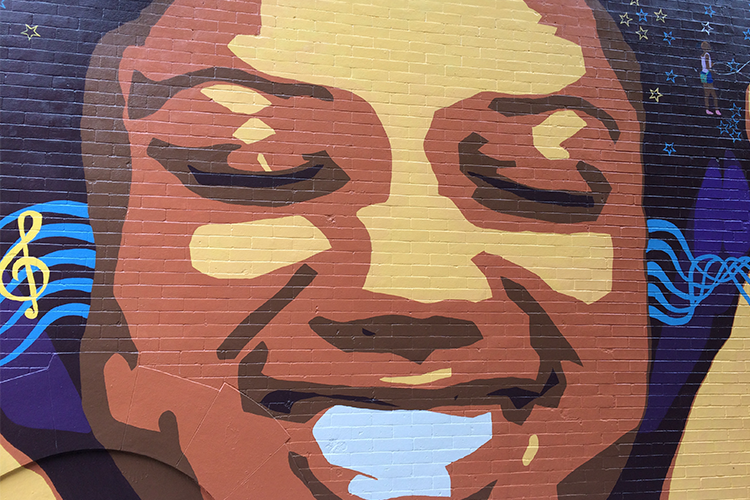
On your stroll uptown, you have to peer at the corners and sides of some of the buildings and the walls along some of the schools to catch glimpses of the colorful and plentiful art. Many of these are Google-Mapped so you can find the gems, or you can seek and discover on your own. I found this one further uptown at the corner of 141st Street and Amsterdam Avenue. The joy on this vibrant face is uplifting.
Schomburg Center for Research in Black Culture
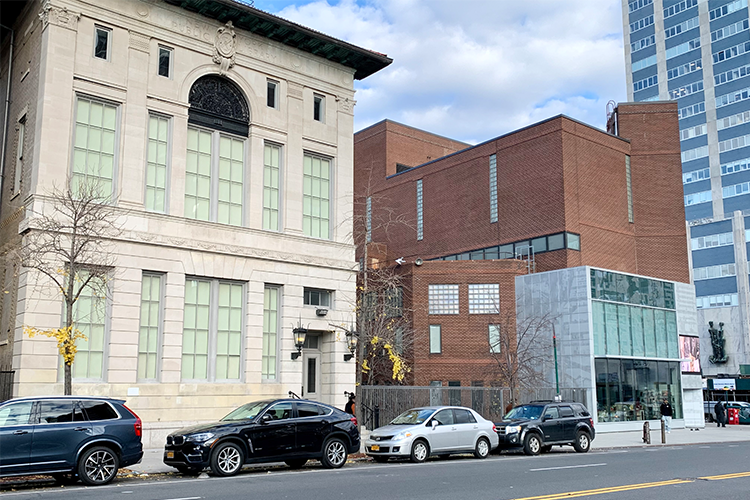
On 135th Street and at the corner on Malcolm X. Boulevard is the Schomburg Center for Research in Black Culture, directly across from Harlem Hospital, and up the street from the Harlem Y where Langston Hughes stayed. The Schomburg Center is actually three buildings, with the original Landmark building, once the 135th Street Library of The New York Public Library, standing stately since the early 1900s, designed in the Italian Renaissance Palazzo style. Named for the self-described Afro-Puerto Rican Arturo Alfonso Schomburg on whose personal 10,000-item collection the current archive is based, the library played an instrumental role in the Harlem Renaissance.
Rivers
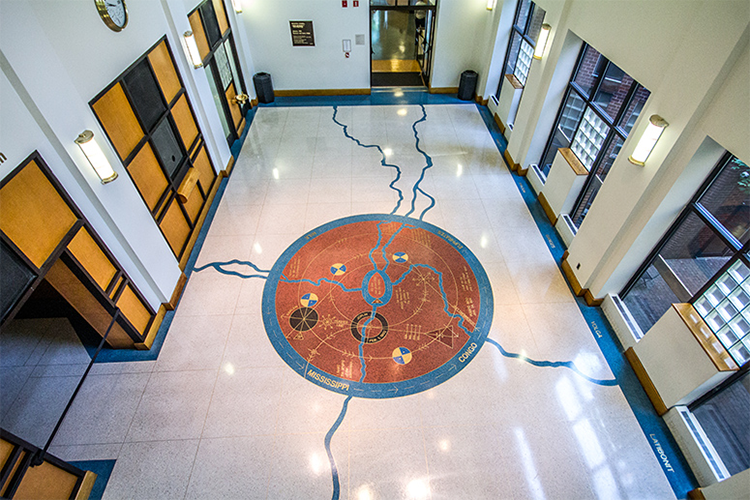
Within the Center, is a public art installation, Rivers, memorializing the lives and work of Arturo Schomburg and Langston Hughes. The entire room, Langston Hughes Lobby, holds the artwork on the terrazzo tile floor with a Cosmogram in the center symbolizing the coming together of Hughes and Schomburg, symbolic of the migration, immigration, and Atlantic Slave Trade that has carried the African Diaspora far, and brought many of us to Harlem.
The words inscribed on the Cosmogram are from Hughes’ first published poem, The Negro Speaks of Rivers. Underneath the symbol of a fish at the very center of this work of art, are some of the ashes of Langston Hughes in a book-shaped urn. Emanating from the Cosmogram are blue lines representing the rivers that lead out to the blue borders of the room symbolizing the sea. Many visitors claim to get a little shiver (I still do) when hearing the history of Rivers standing around the Cosmogram, as though the ancestors have tapped you on the shoulder.
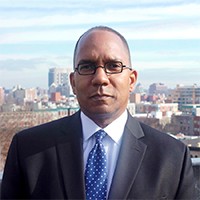
Kevin C. Matthews is the chief of staff at the Schomburg Center for Research in Black Culture and a proud resident of Harlem. His connection to Columbia goes back a long way: He graduated with a degree in political science from Columbia College in 1980 and, from 2009 to 2013 he served as executive director of the Double Discovery Center. He is also a member of the Black Alumni Council of Columbia University.